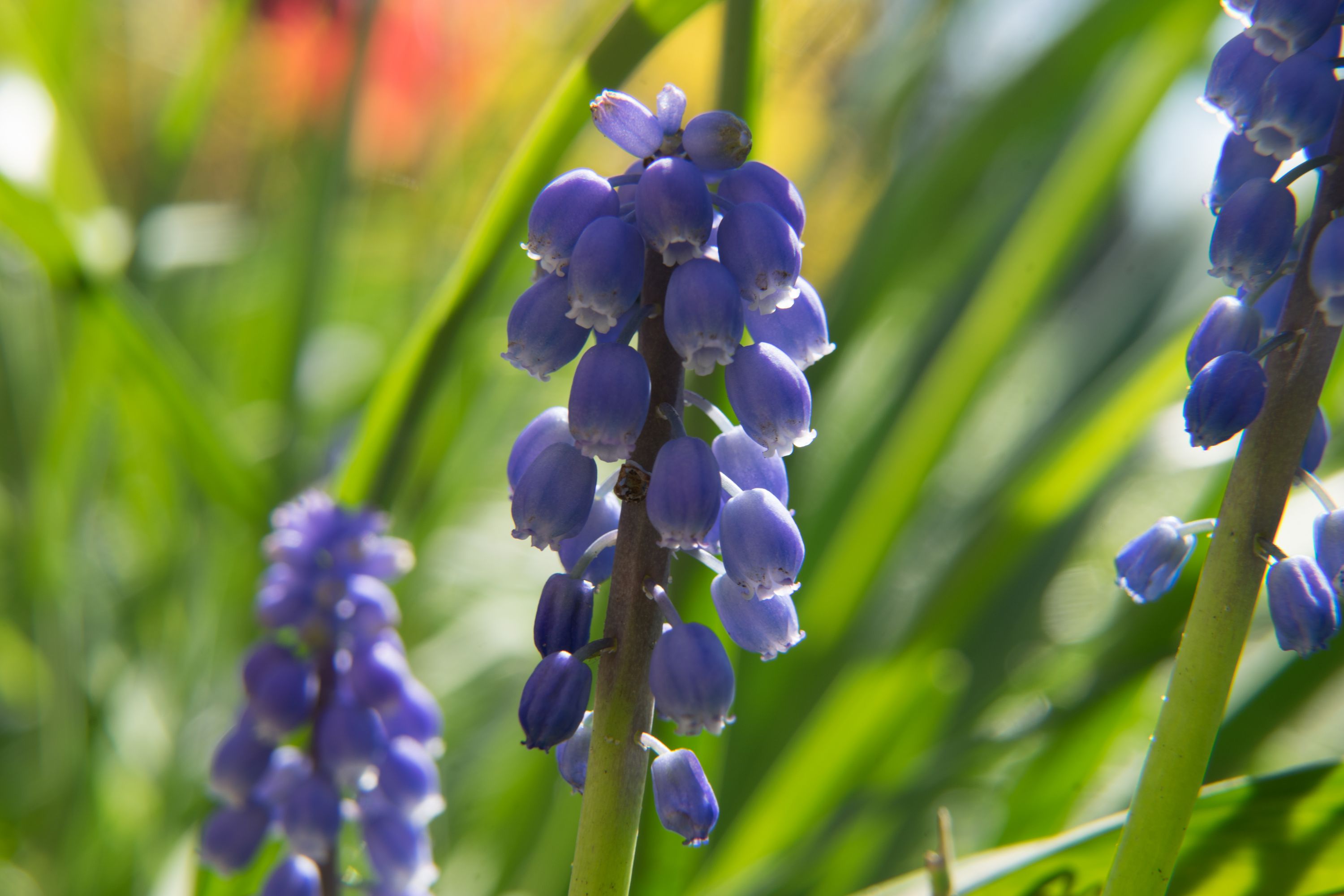Grape hyacinth
(Muscari botryoides)

Description
Muscari botryoides is a beautiful spring-flowering bulbous plant, belonging to the Asparagaceae family. It is commonly known as grape hyacinth, and it is native to Europe, North Africa, and western Asia. Grape hyacinth is widely cultivated in gardens and landscapes as an ornamental plant because of its beautiful, bell-shaped flowers and delightful fragrance. This article will provide an encyclopedia-like description of Muscari botryoides, including its botanical characteristics, cultural requirements, propagation, and uses. Botanical Characteristics: Muscari botryoides is a bulbous plant that typically grows up to 20 cm in height. The bulbs are small, brownish, and oblong in shape, measuring about 1-2 cm in diameter. The leaves are linear, narrow, and basal, growing up to 20 cm in length and 2-5 mm in width. The foliage is dark green, with a waxy texture, and it forms dense clumps. The flowers are produced on a short, stout stalk that emerges from the center of the basal leaves. The flower stalk is about 5-15 cm tall, and it bears a dense, compact cluster of bell-shaped flowers that are blue-violet in color. Each flower is about 1-2 cm long, with six petals fused at the base to form a short tube. The flowers have a sweet, musky fragrance and are pollinated by bees and other insects. The fruit is a small, rounded capsule that contains one to three seeds. Cultural Requirements: Muscari botryoides is an easy-to-grow plant that prefers well-drained, fertile soil with a neutral to slightly alkaline pH. It thrives in full sun to partial shade and requires moderate watering. Grape hyacinth is a cold-hardy plant that can tolerate temperatures as low as -30°C. It is a great plant for naturalizing in lawns, rock gardens, and borders. Grape hyacinth blooms in mid-spring and can be grown as an annual or perennial plant. The bulbs can be left in the ground year-round and will multiply over time, forming larger clumps. Propagation: Muscari botryoides can be propagated by bulb division or by seed. The bulbs can be dug up and divided in the fall after the foliage has died back. The bulbs should be carefully separated into individual offsets, each with its own roots, and replanted immediately. Grape hyacinth can also be propagated from seed. The seeds should be sown in the fall, about 1-2 cm deep, and 5-10 cm apart. They will germinate in the spring and can be transplanted when they have grown to a sufficient size. Uses: Muscari botryoides is primarily grown for its ornamental value. It is a popular plant for borders, rock gardens, and naturalizing in lawns. Grape hyacinth is also used in cut flower arrangements, where its delicate flowers and sweet fragrance add a lovely touch to bouquets. In some cultures, grape hyacinth is also believed to have medicinal properties, and it has been used to treat various ailments such as headaches, constipation, and stomach problems. Conclusion: Muscari botryoides, or grape hyacinth, is a beautiful and easy-to-grow spring-flowering bulbous plant. It is highly valued for its ornamental value, sweet fragrance, and ease of cultivation. Grape hyacinth is a great plant for naturalizing in lawns, borders, and rock gardens, and it can also be used in cut flower arrangements. With its stunning blue-violet flowers and delightful scent, grape hyacinth is sure to add a touch of beauty and charm to any environment.
Taxonomic tree:







